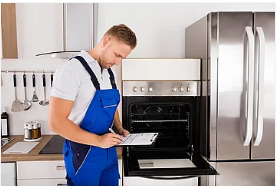
The Importance of Service Performed Information on Warranty Claims

When your technicians perform a diagnosis and repair on a customer’s product, they must summarize what they discovered and what they did to correct the product performance issue. As a general rule this information is inputted on the service order at the customer’s home. The technician is not proving to the manufacturer why the work he/she did was valid and deserves a reimbursement under warranty. For this reason, it is important to re-evaluate the technician’s notes “Service Performed Description” on each service job prior to submitting a warranty claim.
Clarity and Accuracy Are Key
Lets start by dividing service jobs into two categories–repairs with parts and repairs without parts.
Repairs with Parts
When the technician replaces a defective part(s) it is clear in warranty processing that a part failed and your request for reimbursement should be approved. However, let’s say the Service Performed reads, “installed fuse” rather then “replaced fuse.” Your claim could potentially be rejected. Since this is a repair and not a product installation it is of utmost importance you use proper wording in the Service Performed Description.
Parts are not all warrantied for one year, some parts such as cosmetic parts have a shorter warranty period (maybe as short as 10 days). When the product was delivered, and the door was dented or cooktop cracked, the customer must contact the seller or manufacturer immediately otherwise there is no way to prove the defect happened during shipment or installation of the product.

Repairs without Parts
When the technician can repair the product without parts, the warranty claim now becomes more difficult to justify to the manufacturer. In these cases, both the Customer Complaint Description and the Service Performed Description must contain the proper wording to describe the service. Reseating or reconnecting are the proper words to use rather than adjusted or aligned.
Service Performed Descriptions Typically Unacceptable without Prior Authorization
Refrigerators: Needs new filter. Handle fell off. Unit in garage. Adjusted temperature settings. Bent hinges. Overstocked freezer or refrigerator. Ice jammed in housing. Door left open to defrost. Rodent chewed wires. Technician ran service call and discovered product was already exchanged.
Washers and Dryers: Used too much laundry detergent. Hooked up wrong. Dryer vent needs cleaning. Overloaded unit. Service requires an electrician. Found coins in unit. Instructed customer how to use unit. Technician ran service call and discovered product was already exchanged.
Microwaves: Food splatter. Put foil in microwave. Set time. Needs an electrician. Instructed the customer how to use the unit. Technician ran service call and discovered product was already exchanged.
Range: Food splatter needs cleaning. No gas hook up. Instructed the customer how to the unit. Roach infested (Oh, great). Technician ran service call and discovered product was already exchanged.
If you frequently run into situations where your technicians run service calls only to find the customer has had the unit exchanged by the seller, include a call reminder in your service call appointment confirmation. For example, “If your defective product was already exchanged by the seller, please call us immediately to be removed from our service call schedule.”




